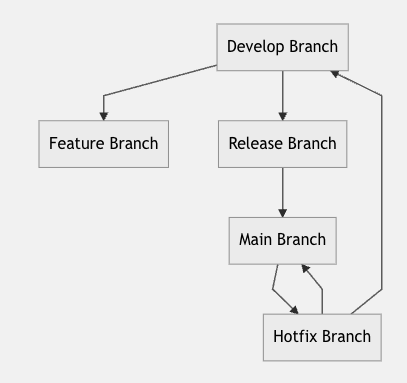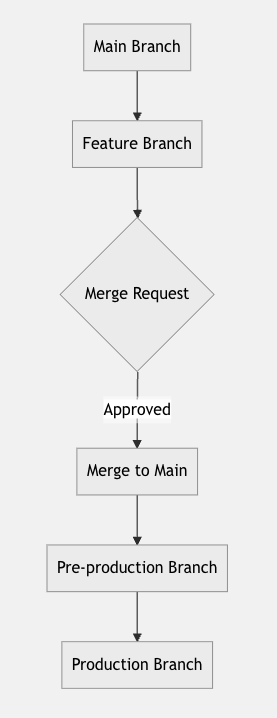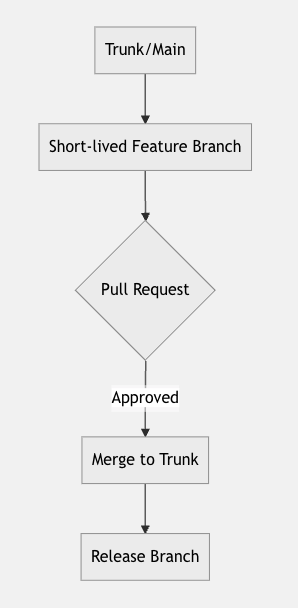Git branching strategies are systematic approaches to managing different versions of your codebase within a Git repository. They help in organizing and coordinating development work, ensuring code quality, and facilitating collaboration among team members.
Git branching strategies are crucial for efficient software development. This post examines five popular strategies, their workflows, and use cases.
1. GitHub Flow
graph TD
A[Main Branch] --> B[Feature Branch]
B --> C{Pull Request}
C -->|Approved| D[Merge to Main]
C -->|Rejected| B
D --> E[Deploy]
Workflow:
- Create feature branch from main
- Develop and commit changes
- Open pull request
- Review and discuss
- Merge to main
- Deploy
Best for: Small teams, continuous delivery projects.

2. GitFlow
graph TD
A[Develop Branch] --> B[Feature Branch]
A --> C[Release Branch]
C --> D[Main Branch]
D --> E[Hotfix Branch]
E --> D
E --> A
Workflow:
- Develop features in feature branches
- Merge features to develop
- Create release branch from develop
- Test and fix in release branch
- Merge release to main and develop
- Use hotfix for urgent production fixes
Best for: Larger teams, projects with scheduled releases.

3. GitLab Flow
graph TD
A[Main Branch] --> B[Feature Branch]
B --> C{Merge Request}
C -->|Approved| D[Merge to Main]
D --> E[Pre-production Branch]
E --> F[Production Branch]
Workflow:
- Create feature branch from main
- Develop and commit changes
- Open merge request
- Review and merge to main
- Deploy to pre-production
- Deploy to production
Best for: Continuous delivery with staging environments

4. Trunk-Based Development
graph TD
A[Trunk/Main] --> B[Short-lived Feature Branch]
B --> C{Pull Request}
C -->|Approved| D[Merge to Trunk]
D --> E[Release Branch]
Workflow:
- Work on trunk or short-lived feature branches
- Frequently integrate changes to trunk
- Use feature flags for incomplete features
- Create release branches for versioning
Best for: Experienced teams, continuous integration focus.

5. Release Flow
graph TD
A[Main Branch] --> B[Feature Branch]
B --> C{Pull Request}
C -->|Approved| D[Merge to Main]
D --> E[Release Branch]
E --> F[Hotfix Branch]
F --> E
Workflow:
- Create feature branches from main
- Develop and open pull requests
- Merge features to main
- Create release branch for deployment
- Apply hotfixes directly to release branch
Best for: Large-scale projects with multiple versions in production

Choose the strategy that best fits your team size, release cadence, and project complexity.
Remember: The right branching strategy is like a well-oiled machine - it keeps your development flowing smoothly and your team in sync. Choose wisely, and may your merges be ever conflict-free! Automate your deployments now on DeployHQ without complications :)
*Note: graphs were created with Mermaid
